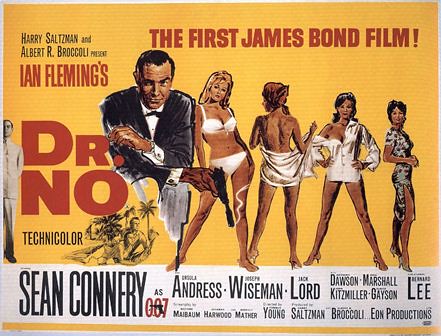The first of the James Bond film series, based on the novels by Ian Fleming, Dr. No, is released in Britain
“Dr. No” was the first film in the James Bond franchise, released in 1962. It is based on the 1958 novel of the same name by Ian Fleming. The film was directed by Terence Young and produced by Albert R. Broccoli and Harry Saltzman. “Dr. No” is known for introducing the iconic British secret service agent James Bond, played by Sean Connery.
Plot:
The story follows James Bond, also known by his code number 007, who is sent on a mission to investigate the mysterious disappearance of a fellow British agent in Jamaica. Bond’s mission leads him to the enigmatic Dr. Julius No, a reclusive scientist with nefarious intentions.
Dr. No, portrayed by Joseph Wiseman, is a criminal mastermind with a bionic hand and a secret base on the fictional island of Crab Key. He plans to disrupt American rocket launches by interfering with their guidance systems, potentially triggering a global catastrophe. Bond must thwart Dr. No’s plans and rescue the missing agent, all while navigating a web of intrigue, danger, and seduction.
Key Characters:
James Bond (Sean Connery): The suave and resourceful British secret agent known for his charm, wit, and combat skills. Sean Connery’s portrayal of Bond in “Dr. No” established the character’s enduring popularity.
Honey Ryder (Ursula Andress): A stunning and independent woman Bond encounters on Crab Key while investigating Dr. No’s operations. She is known for her iconic entrance, emerging from the ocean in a white bikini.
M (Bernard Lee) and Miss Moneypenny (Lois Maxwell): Bond’s superior, M, and his flirtatious secretary, Miss Moneypenny, who provide him with his assignments and support.
Quarrel (John Kitzmiller): A local Jamaican ally who helps Bond in his mission.
Legacy:
“Dr. No” set the stage for the long-running James Bond film series, which has become one of the most successful and enduring franchises in cinema history. The film’s formula of espionage, action, gadgets, and charismatic characters became a template for subsequent Bond films. Sean Connery’s portrayal of Bond in “Dr. No” contributed significantly to the character’s iconic status.



